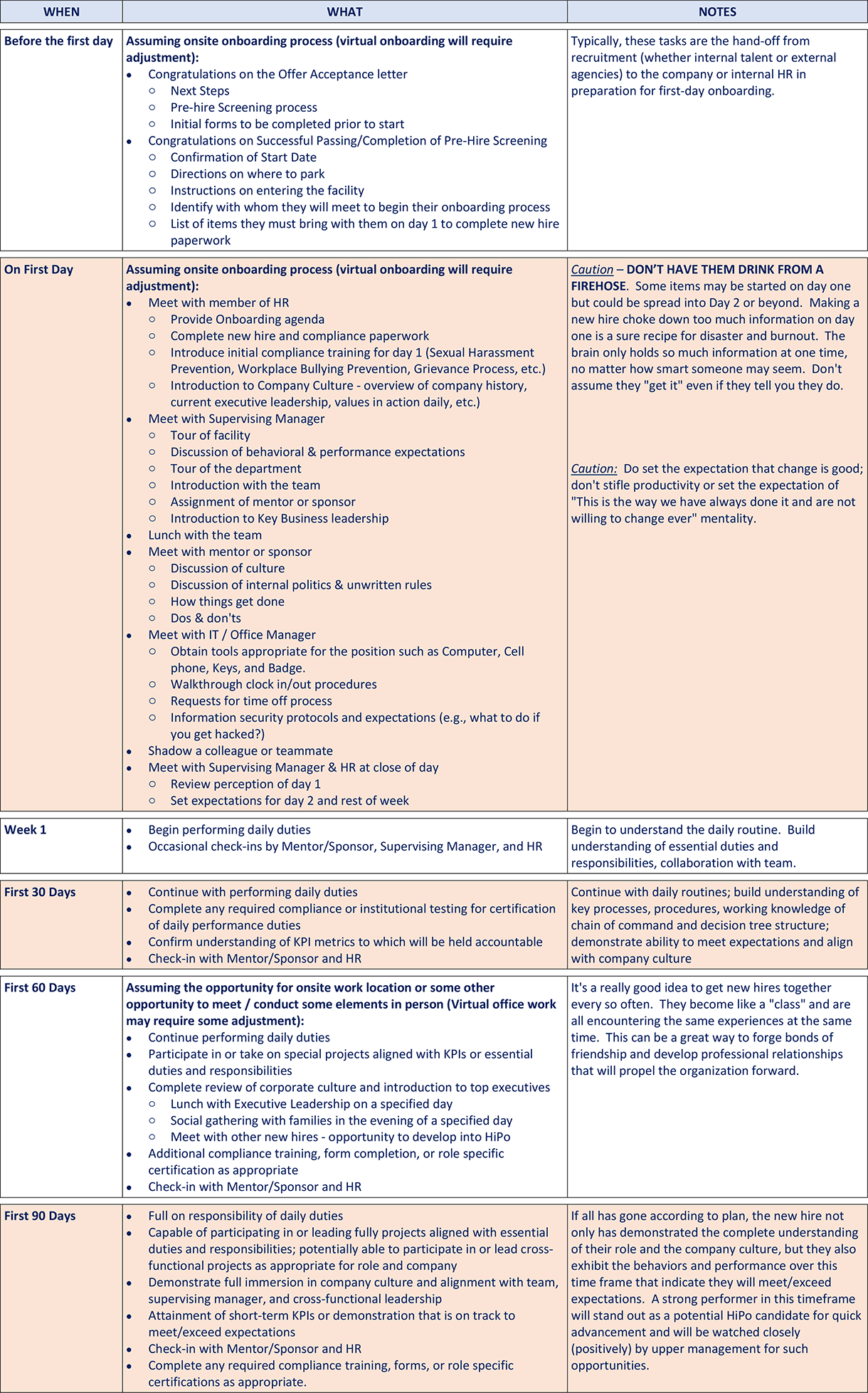The current labor and employment market is the most volatile in recorded history. Never have employee candidates had more choices and power in the market than they do today. Add to this the pandemic, continued low wage growth for most people below the executive level, technological improvements, and failure of many businesses to appropriately demonstrate caring and support of their people. The result is the current crisis known as The Great Resignation.
While the Great Resignation does not impact all businesses, industries, sectors, and career levels equally, all of these segments are nonetheless affected. Even at the executive level (Vice President through C-Suite), where people are arguably treated better than many front-line, entry-level people, and who are recipients of already higher pay and higher pay growth over the last 20 years and more, are cashing in on this wave driving up base salaries, signing bonuses, and restructuring of bonus packages more favorable to them.
 There is no silver bullet to stop the trend, but one critical focus has received too little attention leading up to and throughout this pandemic. This focus has the highest probability of making the most positive and significant impact on stabilizing this challenging labor and employment market. What is it, you might ask? EMPLOYEE RETENTION STRATEGIES.
There is no silver bullet to stop the trend, but one critical focus has received too little attention leading up to and throughout this pandemic. This focus has the highest probability of making the most positive and significant impact on stabilizing this challenging labor and employment market. What is it, you might ask? EMPLOYEE RETENTION STRATEGIES.
This is the first of a 4-part series that will address Onboarding, Recruiting, Total Rewards, and Organizational Design strategies that collectively affect and reflect the retention strategies of an organization. Employee Relations and Communication strategies overlap and lend support to these (4) categories, making them more successful at retaining key talent. Interesting to note that each of these areas (outside of Onboarding and Communication) is a dedicated Human Resources discipline. Each discipline is far too deep a topic to cover fully and impacts significantly more than just employee retention. Therefore, each area will be discussed from the standpoint of their impact on employee retention and not the totality of the discipline.
A Typical New Employee Onboarding Scenario
Let’s take a look at a typical start to a new hire’s onboarding journey.
It’s your first day on the job. The day is filled with hope and promise. The interviews were exhausting, lasting several days stretched over several months. Many were conducted virtually due to the pandemic and precautionary guidelines (thankfully, they didn’t see your comfy fuzzy bunny slippers). The final interview included an in-person onsite series of interviews and a facility tour. You are nervous even though you are confident you made the right decision.
As you walk into the office building for your first day, you notify the receptionist that you are here. He looks at you quizzically, not knowing who you are nor whom you are supposed to see. The receptionist asks you to have a seat, and he will track down who should greet you.
“This is odd,” you think to yourself. “The interview process seemed relaxed, organized, and well-executed. Perhaps it’s nothing, and I’m just being critical. Relax – think happy thoughts. Today is going to be a great day!”
Twenty minutes go by, and no one has come to greet you yet and begin your onboarding. You approach the receptionist and ask, “Sir, am I supposed to be meeting with HR first or my direct supervisor?”
“I’m not sure,” he replies. “I contacted HR, but they did not answer. I left a message with the HR Generalist, who typically handles new hire paperwork. I am sure they will be here any moment.”
 And so, you go back to the seat in the receiving area where you had been sitting and continue to wait. Anxiety starts to build into frustration. “I did get the right start date, didn’t I?” you think to yourself. You pull out your cell phone, access your personal emails, and search for the welcome email with your start date information. “Yep, I got the right day and time.”
And so, you go back to the seat in the receiving area where you had been sitting and continue to wait. Anxiety starts to build into frustration. “I did get the right start date, didn’t I?” you think to yourself. You pull out your cell phone, access your personal emails, and search for the welcome email with your start date information. “Yep, I got the right day and time.”
After another 20 minutes, an employee comes in through the front doors. On their way past the front desk, the Receptionist stops them saying, “Akeem! So glad you are here. I left a voice mail for you a bit ago about this person starting today. Are you supposed to do their onboarding, or is the hiring manager?”
Looking a little embarrassed, Akeem says. “I’ll handle it,” and he turns to greet you, arms full of coat, coffee, umbrella, and thick, overstuffed computer bag. Fumbling with everything to free up a hand, Akeem offers you a proper handshake and greets you. “Hi, I’m Akeem, HR Generalist. I hope you have not been waiting long.”
Mentally you are quite miffed and barely contain the thought, “waiting long? I have been waiting for nearly an hour now,” from coming out your mouth.
“Not too long,” you reply instead. “Very eager to get started for my first day.”
This scenario often plays out in too many companies, from small independently owned businesses with under 20 employees to large publicly traded multi-national companies with over 60,000 employees globally. It does not matter if there is no HR presence, an HR department of one, or a large 100+ person HR department with defined HR discipline coverage and degreed/certified professionals, this first-day scenario and the corresponding train-wreck of an onboarding experience that follows it can happen anywhere. An experience such as this starts the time clock ticking towards resignation day. Not what any business wants when they spend so much money, time, effort, and energy to recruit the right person for the position.
An effective new employee onboarding program is a critical step in retaining employees. The only constant in business is change, and change is the greatest source of stress, worry, and concern for most people regardless of career level. The onboarding process should be designed to reduce the new employee’s stress, anxiety, and concern by transparently and effectively communicating with them. Effective communication is critical.
Each company is uniquely different, so each employee onboarding program should be customized to your company. Through the onboarding program, necessary compliance forms (such as i-9s and w4s) will be completed, but information about the company culture, including the written rules (e.g., employee handbook, policies, and procedures) and the unwritten rules are also critical to communicate. Yes – unwritten rules. Let’s face it— every company has them. They include how we communicate, make decisions, and the words we use. Some phrases are “taboo” in one company that a new hire may have used frequently in a previous company. Making the mistake of using the wrong terminology can inadvertently send the wrong message and impact how the new hire will be treated.
 Then there is navigating the internal political system of the new company. Every company has its own internal politics. Approach the wrong person out of order, and someone will be offended that you didn’t “follow the chain of command.” But without communicating to the new hire that a chain of command even exists sets them up for failure.
Then there is navigating the internal political system of the new company. Every company has its own internal politics. Approach the wrong person out of order, and someone will be offended that you didn’t “follow the chain of command.” But without communicating to the new hire that a chain of command even exists sets them up for failure.
While every company is different, there are consistent things that every company can do to ensure a smooth start to a new hire’s first day regardless of the career level or position into which they are hired. Here is a brief breakdown of some key elements and timelines to consider for your onboarding strategy (note: this is not an all-inclusive list, and your specific company likely will add/subtract elements as fits your industry, company, and even the position of the new hire):
New Hire Onboarding Checklist & Timeline

Typical Onboarding Scenario – Revisited

Let’s look back at the scenario that we started with, only this time, let’s see how a strong onboarding strategy could have made a difference to the start of an employee’s first day.
It’s your first day on the job. The day is filled with hope and promise. The interviews were exhausting, lasting several days, stretched over several months, and conducted virtually. The final interview included an in-person onsite series of interviews and a facility tour. You are nervous even though you are confident you made the right decision.
As you walk into the office building for your first day, you walk over to the receptionist to notify him that you are here. Before you cross halfway from the front door to the front desk, you hear your name called out. Stopping and looking in the direction of the voice, three people with big smiles approach. “Welcome! We are so glad you are here!” Hearty handshakes and brief introductions reveal that the Chief Human Resources Officer, your direct supervisor, and the Talent Acquisition Lead who guided you through the recruitment process were first to greet you. Brief pleasantries are traded, and the CHRO then directs everyone toward the HR offices to begin the onboarding process.
“We have a wonderful day in store for you,” says your Supervising Manager. “There will be many people to meet and information to share with you, but don’t worry. You will have plenty of time to take it all in. Change can be difficult, so we hope to make this as smooth a transition for you as we can. We are just so glad to have you here!”
See Part 2 (Recruiting) for tips that will help.
See Part 3 (Total Rewards) for tips that will help.
See Part 4 (Organizational Design) for tips that will help.





